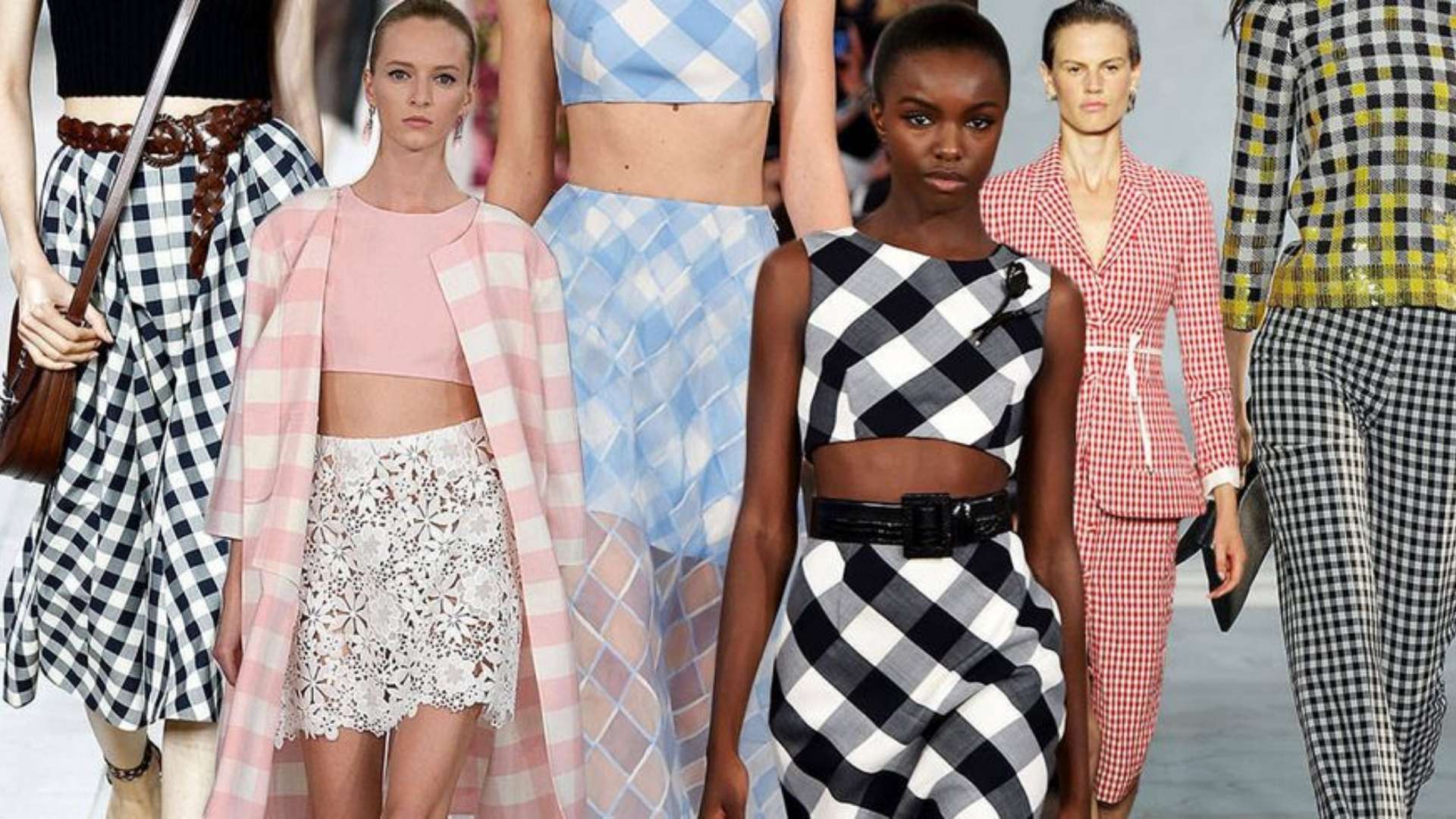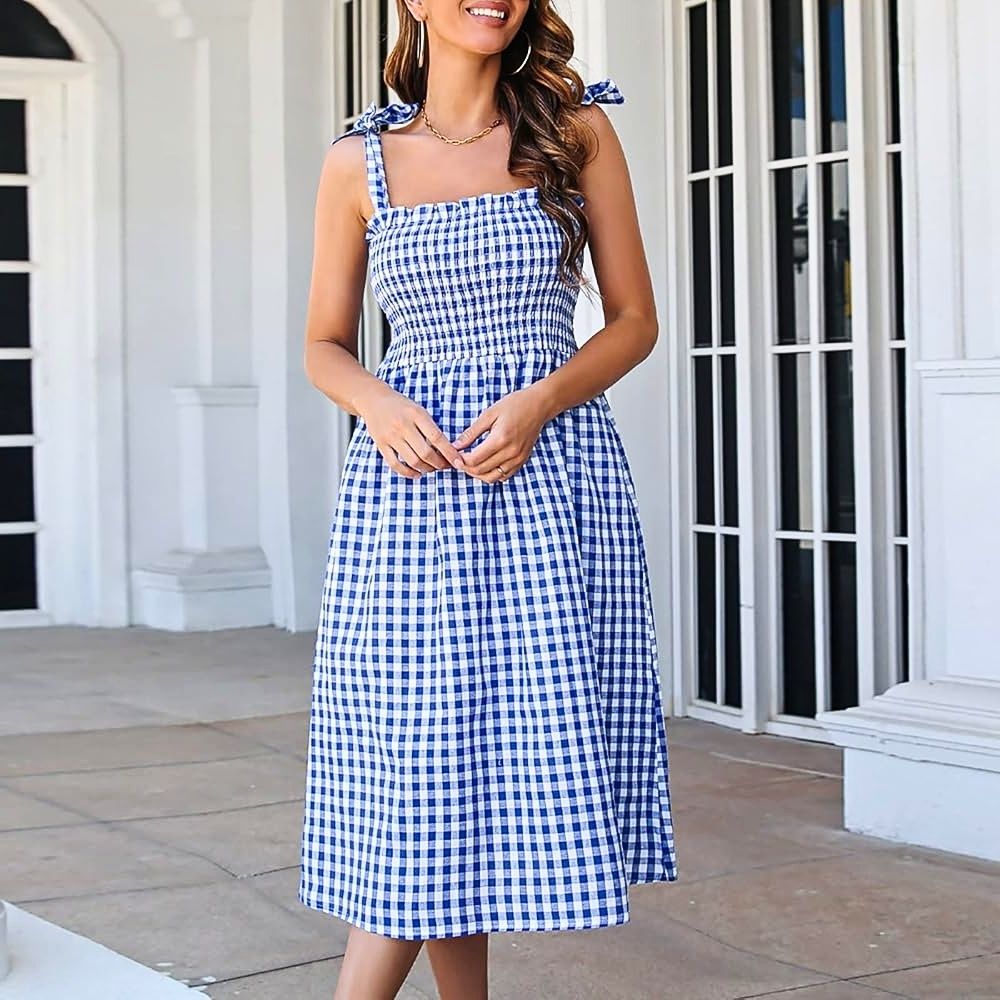Buffalo Check vs Gingham: Which Pattern is Right for You?
by Teresa Finn on Dec 29, 2024
Table of Content
Patterns add personality to everything from fashion to home decor. Among the most iconic designs are buffalo plaid vs gingham. While they may seem similar at first glance, each pattern brings its charm, history, and purpose. So, what sets buffalo check vs gingham apart?
Let’s explore their origins, characteristics, and uses to uncover how these timeless patterns differ and how to make the most of each.

Feature |
Buffalo Check |
Gingham |
Origins |
Attributed to Woolrich Woolen Mills around 1850; the designer reportedly named it after his herd of buffalo. |
The term "gingham" is believed to derive from the Malay word "genggang", meaning striped. |
Pattern |
Features large, evenly sized squares created by intersecting stripes of two colors, traditionally black and red. The scale of the squares is typically larger than that of gingham. |
Consists of small, evenly spaced checks formed by intersecting stripes of two colors, typically white and another color such as red or blue. |
Colors |
Traditionally uses black combined with another color (commonly red). |
Typically pairs white with another color. |
Cultural Associations |
Buffalo check is often linked to rugged, outdoor aesthetics, whereas gingham is associated with a classic, sometimes vintage, charm. |
Gingham evokes a timeless, fresh appeal, often tied to cheerful, sunny designs. |
Common Uses |
Often associated with lumberjack attire and outdoor flannel shirts; also popular in home décor for items like blankets and upholstery. |
Widely used in clothing such as dresses, shirts, and aprons; also prevalent in home décor items like tablecloths, napkins, and curtains. |
Distinguishing Buffalo Check and Gingham
1. What Is Buffalo Check?
History and Origin
Buffalo check has a fascinating history that stretches back to Scotland, originating as the Rob Roy tartan, named after the legendary Scottish folk hero Rob Roy MacGregor. This iconic red-and-black tartan was deeply tied to Clan MacGregor and symbolized strength and resilience. But how did this bold pattern make its way across the Atlantic to become a staple in American culture?

One theory credits Jock McCluskey, a descendent of Rob Roy, who brought the tartan to the United States in the 1800s. Jock was no ordinary immigrant—he was a trader with strong ties to Native American tribes. In exchange for buffalo pelts and other goods, Jock traded Scottish tartan blankets. These heavy blankets, adored for their vibrant red tones, were believed by some tribes to bring luck and protection in battle.
By 1850, John Rich II, the founder of Woolrich Woolen Mills in Pennsylvania, designed the first-ever buffalo check flannel shirt. Beloved by loggers, farmers, and outdoorspeople, the shirt became synonymous with rugged American workwear. Legend has it that Rich—or his pattern designer—owned a herd of buffalo, giving the pattern its now-iconic name.

Characteristics of Buffalo Check
Buffalo check is defined by its large, bold squares in two contrasting colors. The classic red-and-black combination is iconic, but modern versions include shades like navy, green, beige, and pastels. This oversized pattern, with squares ranging from 1 ½ to 6 inches, stands out for its striking and versatile appeal.
Typically woven into heavier fabrics like flannel or wool, buffalo check offers warmth, durability, and a cozy texture perfect for outdoor clothing and home decor. Its bold design has a rustic charm that transitions effortlessly into contemporary settings when paired with neutral tones like black and beige.

Common Uses of Buffalo Check
1. Fashion
Buffalo check is a staple in casual and winter wardrobes:
Flannel Shirts and Jackets: Perfect for outdoor activities or layering in colder weather.
Accessories: Scarves, hats, and gloves featuring buffalo check add rustic charm to any outfit.

2. Home Decor
This pattern brings warmth and coziness to interiors:
Throws and Pillows: Ideal for adding a rustic, cabin-like feel.
Curtains and Upholstery: Makes a bold, stylish statement in living spaces.

3. Seasonal Themes
Buffalo check dominates holiday and seasonal decor:
Christmas Accents: Tree skirts, stockings, and table linens often feature its classic red-and-black scheme.
Fall and Winter Trends: Perfect for creating a warm, inviting atmosphere during cooler months.
2. What Is Gingham?
History and Origin

The term "gingham" is believed to have originated from Guingamp, a town in Brittany, France. However, its journey began in Southeast Asia. Introduced to Europe in the 17th century, gingham was initially a striped fabric rather than the checkered pattern we know today. Its lightweight nature, often crafted from cotton or linen, made it highly practical.
By the mid-18th century, gingham evolved into a checkered design in Europe, particularly in the textile mills of Manchester, England. This new style paired white with colors like blue, red, and black, creating the iconic gingham look. It later gained prominence in France as "Vichy check" during Napoleon Bonaparte’s reign and spread across Europe, where it became synonymous with charm and utility.
When gingham arrived in the United States, it quickly became associated with domesticity and farm life. From picnic blankets to farmwear, gingham earned its reputation as a versatile and timeless pattern.
For a deeper dive into the history and versatility of gingham, check out our comprehensive guide: What Is Gingham? Everything You Need to Know About This.

Characteristics of Gingham
Gingham is renowned for its small, evenly spaced checks, traditionally woven in two contrasting colors such as red and white or blue and white. Its lightweight, breathable nature—usually crafted from cotton or cotton blends—makes it ideal for warmer weather.
What sets gingham apart is its clean, symmetrical design. The vertical and horizontal stripes are the same color, intersecting on a white background to create a uniform, grid-like pattern. This simplicity evokes a sense of timeless charm, blending practicality with elegance. While classic gingham remains popular, modern trends have introduced muted tones and tan contrasts, adding a sophisticated twist to this iconic pattern.

Common Uses of Gingham
1. Fashion
Gingham’s lightweight and airy appeal make it a favorite in spring and summer wardrobes:
Sundresses and Skirts: Perfect for creating a breezy, casual look.
Button-Down Shirts: Adds a polished yet relaxed touch to everyday wear.
Aprons and Uniforms: Long associated with domesticity, gingham is widely used in kitchenwear and children’s school uniforms.

2. Home Decor
The cheerful and symmetrical checks bring a cozy, nostalgic vibe to the interiors:
Tablecloths and Napkins: A staple for picnic spreads and rustic kitchen settings.
Curtains: Adds a cheerful, classic touch to kitchens and living spaces.
Picnic Blankets: Evokes nostalgia for outdoor gatherings under sunny skies.

3. Seasonal Appeal
Gingham’s association with feel-good domesticity and sunny weather makes it a go-to pattern for spring and summer:
Warm Weather Essentials: Breathable and lightweight for maximum comfort.
Bright and Cheerful Aesthetics: Whether in fashion or decor, gingham enhances seasonal collections with fresh and timeless allure.
Buffalo Check vs Gingham: Key Differences
Pattern Size and Complexity
Color Schemes

Fabric and Seasonal Use


Cultural Significance and Popularity
Buffalo Check
Gingham
Misconceptions About Buffalo Check and Gingham
“Buffalo check is just a bigger gingham.”
While they share a grid-like appearance, buffalo check’s bold design and multicolor options set it apart.“Gingham isn’t modern anymore.”
Gingham thrives in modern decor and fashion, especially with its vintage appeal.“Buffalo check is only for lumberjacks.”
Today, buffalo check is popular for chic winter wardrobes and rustic interior design.
Get the Look: How to Style Buffalo Check and Gingham
Buffalo check vs gingham are versatile patterns, each bringing its own flair to fashion and decor. Pair buffalo check flannels with denim for a rugged winter look, or use gingham dresses to create effortless summer outfits. In home decor, buffalo check throw pillows can contrast beautifully with gingham table linens for a playful yet cohesive style.
Whether you choose the bold charm of buffalo check or the timeless elegance of gingham, both patterns offer endless possibilities to enhance your wardrobe and living space. Let these designs reflect your unique personality and style!
Frequently Asked Questions
Is Buffalo Check the same as gingham?
A Buffalo Check is similar to a gingham but larger in scale. It is also a two-color check, one color is usually always black. Woolrich Woolen Mills designed the first Buffalo Check in 1850 and has been in their line ever since.
What does "buffalo check" mean?
Others point to Pennsylvania and the Woolrich company, which released a red and black shirt in “buffalo check” in 1850. “Legend has it,” the company says, “that the designer of this iconic fabric owned a herd of buffalo, so he named the black and red checkered fabric after his beloved herd.
Is Buffalo Check only red and black?
The original plaid was shown mostly in red and black, but any large plaid crisscrossed with white or black is generally considered a Buffalo Plaid.
What is the main difference between buffalo check vs gingham?
Buffalo check features bold, oversized squares, while gingham has smaller, symmetrical checks.







